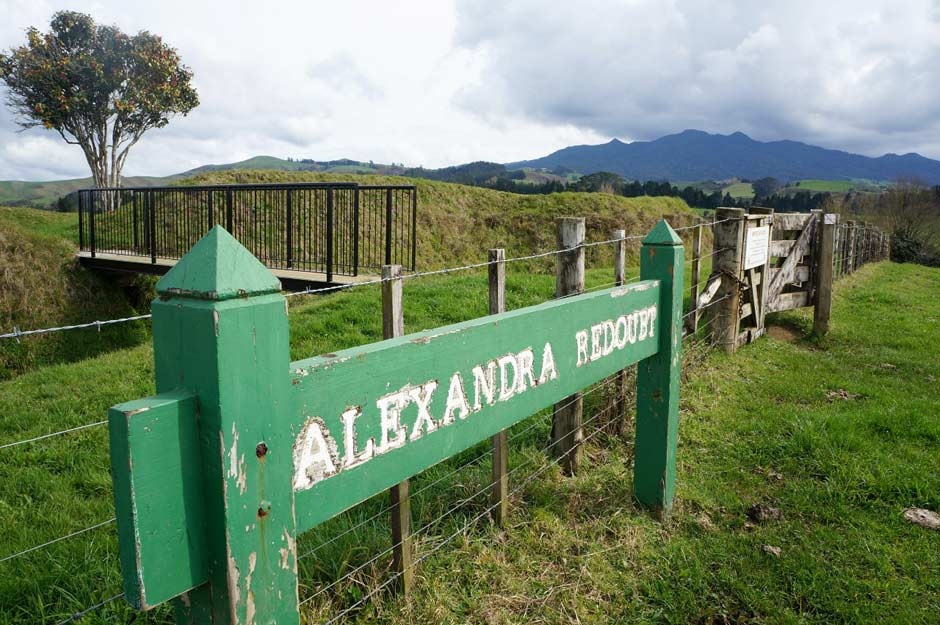
Alexandra Redoubt (1872)
Policing the colonial frontier
An uneasy peace fell over the central North Island from the late 1860s. The fires of Te Kooti’s guerrilla warfare would flicker for a while, but even where rifles were silent tensions remained high, as two worlds eyed each other warily across a narrow buffer zone, the aukati (a line not to be crossed). On one side, most Māori worked with the European colonists, some of whom were settling on newly confiscated Waikato land. Facing them, the shrinking remnants of Māori autonomy occupied the King Country.
Native Minister Donald McLean’s controversial ‘pacification’ programme confiscated vast swathes of Waikato territory and supplemented this with other stratagems such as the use of the Native Land Court and economic development. The military settlement Alexandra was founded in 1864 (along with Cambridge, Kihikihi and Hamilton) when Colonel Theodore Haultain landed at Pirongia from the Waipā River with his militia. Alexandra, just 2 km from the aukati, met the requirements of the time, being readily defensible, close to fertile land and accessible by navigable water. The soldier-settlers who settled at what it was hoped would become a major town were mostly under 30 and had been recruited in Auckland. They camped in tents within sight of the redoubt while surveying took place.
Like most similar military settlements, Alexandra fell short of early expectations. Some settlers drifted away when the government cut funding, leaving the stayers to worry whenever they imagined enemies amassing on the other side of the frontier. The Armed Constabulary, successors to the imperial troops and the militia, built a new redoubt in 1868 during one such scare. The Alexandra Redoubt, the one we can still see, dates from later jitters and was completed in October 1872. High earth walls and deep trenches protected a blockhouse and flagstaff, symbols both of European power and of uncertainty. The Armed Constabulary would guard this unused refuge until 1886. A church sat here from 1900 until 1959. Heritage New Zealand now manages the reserve.
Further information
This site is item number 41 on the History of New Zealand in 100 Places list.
On the ground
There is basic information at the site.


Community contributions